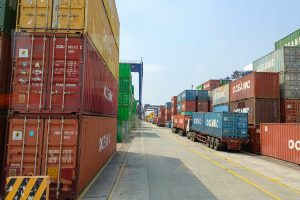Artificial intelligence (AI) and robotics are already changing the face of the construction industry, along with many other technological features. AI’s ability to analyze massive amounts of data in minutes, along with robotics that protect workers from hazardous activities, are just two examples of this transformation. These technologies are already widely used in construction and are expected to expand into multifamily housing within five years.
Robotics
In 2025, robotics is being deployed on construction sites. One common use of construction robotics is layout. Robotics provides more accurate and quicker layouts, with the ability to adapt to field changes, instantly and accurately. The impact of a differing site condition or coordination issue may be identified, analyzed and solved in just minutes, not hours or days. Workflow can continue with minimal interruption, saving time and money in drywall layouts, masonry layouts and millwork, as well as ensuring the correct sizing of furniture, fixtures and equipment.
Robotic carts pick up debris piles and deliver materials to pickup points. Robotic carts also lift heavy objects, thereby protecting workers from injury. Robots can weld safely and with precision, which reduces the risk to the workers. Additionally, robots are capable for plastering and spackling drywall and applying paint. Robotic painters and plasters have the capability to provide a smoother, neater finished product.
On big sites, they can lay bricks, pour concrete and excavate. On even larger sites, robotic trucks and excavation equipment are working on roads, parking lots and foundations. Finally, robotically operated cameras and drones provide significant site coverage to allow remote personnel to view work quality, safety activities and general site operations in real time.
Robots are not only capable for building something — these devices are also capable of demolishing structures. Robots can work more quickly than people, in part because a robot is a piece of equipment, not a human being, so injury and insurance risk are minimized.
As the equipment and technology advance, robots will be developed to perform mortar removal, spalled concrete removal and replacement of mortar and concrete. These are some of the common issues in maintaining multifamily housing. If robotics delivers on its promise, it will make construction more efficient, safer and less costly.
Using robots in any endeavor, including construction, requires an investment in the devices and in training operators. Additionally, local and state building codes will have to adapt to provide for robotic options for work performed by licensed parties. Both the regulatory and cost issues will delay deployment of construction robots, but it is only a delay; robots are coming to construction and sooner than we realize.
AI Data Integration
In parallel, with the development of robotics and the integration of data from robotics and generative AI into increasingly complex files for construction, new technologies are being developed to deploy AI on a regular basis to provide reports on construction projects. The technology exists to search the internet, select computer files for all data relevant to a construction project and integrate it into reports, including budgeting, change orders and scheduling, in hours.
As with robotics, these AI tools are more commonly deployed on large, multi-phase projects. AI will eventually permeate the entire industry. For cooperative and condominium boards, this will be a major advantage. The oversight reports are intended to be easy to read and digest. The data synthesized will include emails, texts, chats and drone footage, as well as more traditional construction data such as daily reports, budgets, change order requests and requests for information. Owners will be able to track projects in real time, seeing where and how projects are being delayed or issues with layout.
For example, there are frequent elevator delays in cooperative and condominium projects. AI would identify the times when the elevators are available for construction and when the unit owners’ use is greatest. That would allow the contractors to plan the use of the elevators to ensure there is no interference with the unit owners’ activities. It would also allow managing agents, board members and design professionals to see unsafe conditions and demand corrective actions before accidents happen. If outside safety consultants are utilized by the board, they will be able to view the project and identify issues quickly and direct corrective work. Fewer accidents translate into savings on insurance.
Technology is changing construction even as this column goes to press. Ask questions of your design professionals and be certain that the most cost-effective technology is being deployed on your projects for both management and physical work. Over time, technology should stabilize pricing and reduce insurance costs.
This column presents a general discussion. This column does not provide legal advice. Please consult your attorney for specific legal advice.
Carol A. Sigmond
Partner
Greenspoon Marder LLP
1345 Avenue of the Americas
Suite 2200
New York, NY 10105
carol.sigmond@gmlaw.com
(212)524-5074






















